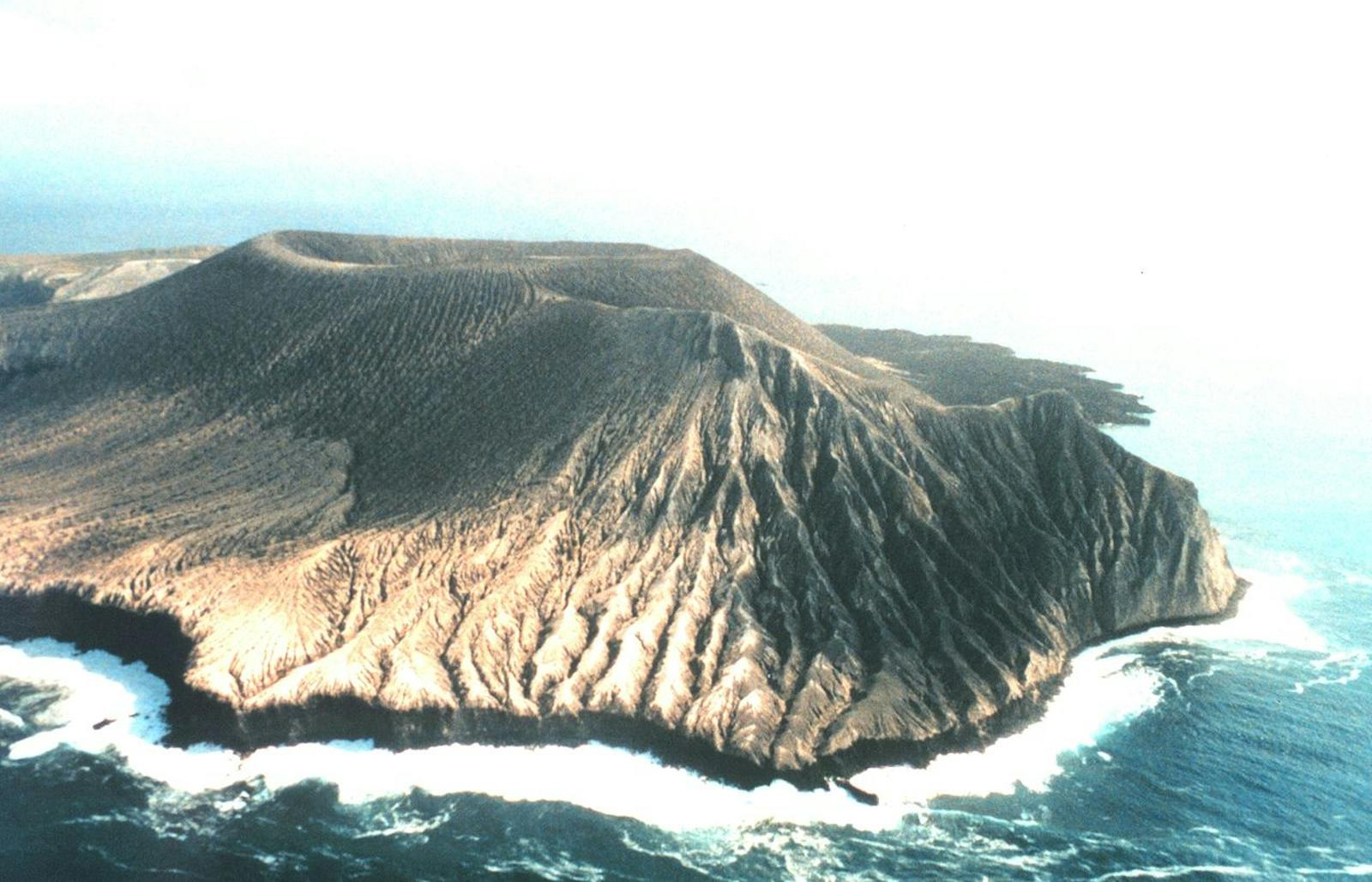Islas Revillagigedo Dry Forests
The ecoregion’s land area is provided in units of 1,000 hectares. The conservation target is the Global Safety Net (GSN1) area for the given ecoregion. The protection level indicates the percentage of the GSN goal that is currently protected on a scale of 0-10. N/A means data is not available at this time.
Bioregion: Mexican Subtropical Islands (NT29)
Realm: Central America
Ecoregion Size (1000 ha):
21
Ecoregion ID:
533
Conservation Target:
100%
Protection Level:
10
States: Mexico
The critically endangered Socorro mockingbird is endemic to Socorro Island, part of the Revillagigedo Island’s Dry Forests ecoregion in Mexico. Highly adapted to island life, a life with few predators, this mockingbird is a reluctant flier and prefers to hop around instead. They feed on small insects, including flies if they can coax on to land in front of them, and remains of land crabs. These birds are solidary and only come together around an abundant food source, during which time they display a complex social hierarchy. Still common in the 1950s, they are now threated to fewer than 400 individuals after decades of habitat loss and predation by feral cats.
_resized.jpg)
The flagship species of the Islas Revillagigedo Dry Forests ecoregion is the Socorro mockingbird. Image credit: Alan Harper, Creative Commons
Volcanic activity from the Pleistocene gave rise to the four Revillagigedo Islands: Socorro, Clarión, San Benedicto, and Roca Partida, located approximately 390 km southwest of Cabo San Lucas in Mexico. Socorro Island is the largest of the four. Socorro and Clarion share an abrupt topography of deep canyons and valleys. Rocky or sandy beaches can be found on all islands. In general, the four islands are dry, with a mean annual precipitation of 600 mm/year. Soils are of volcanic origin; Clarion’s soil is older and deeper than Socorro’s.
The four islands are covered by dry forest and share climatic and ecological characteristics that are responsible for the different vegetation associations found at the islands. The coastlines are dominated by green buttonwood mangroves with Hibiscus pernambucanas and herb plants often present. At elevations between 0–250 m, growing on basalt spills, the scrub Croton masonii is the dominant species. On top of the Croton scrub, a secondary type of vegetation community has developed due to extensive erosion, namely fig trees, Guettarda insulari, and plants from the genus Psidium. The most dominant vegetation association in the islands is composed of hopbush, Guettarda insularis, black cherry, and endemic species of prickly pear cactus.
The isolation of the Revillagigedo Islands in the Pacific Ocean has favored a radiation of many species (organisms diversifying from their ancestors rapidly) making the islands a place of unparalleled endemism. Of 117 species of native plants, 31.6% are endemic on Socorro Island, 26% on Clarión, and 45% on San Benedicto. All of the terrestrial vertebrates are endemic to the islands, as well as 14 out of 16 terrestrial birds.
Socorro Island specifically has a dense forest of fig trees, among other vegetation which promote higher bird populations. Distinctive species on these islands include the following endemic and restricted range species: endangered Socorro Island tree lizard, Socorro parakeet, Socorro wren, and critically endangered Socorro mockingbird. The Revillagigedo Islands are considered a priority area for conservation by IUCN and an Endemic Bird Area (EBA) by ICBP. The islands constitute one of the most important nesting, breeding, and foraging sites for four sea turtle species: vulnerable leatherback turtle, vulnerable olive ridley turtle, endangered green turtle, and critically endangered hawksbill turtle.
A great portion of the original vegetation of the Revillagigedo Islands has been destroyed over the last 50 years. Domestic sheep were introduced to the island in the 1960’s and 70’s, contributing to the loss of at least 1% of the native vegetation. Feral cats also contributed to the reduction of native bird populations. As a consequence of this, and other pressures, the Socorro dove became extinct in the wild between 1958–1978. The islands have received federal protection since 1994, yet an adequate management program is still needed.
The main threats to the islands include destruction and degradation of native vegetation, soil erosion caused by introduced ungulates, and the introduction of exotic birds and mammals. Naval officers and their families inhabit the islands and maintain the populations of introduced sheep.
The priority conservation actions for the next decade are to: 1) promote sustainable grazing and management by locals; 2) monitor and manage introduced species, namely feral cats; and 3) create an on-site biological station to monitor the islands’ status, ideally on Socorro.
Citations
1. Valero, A. Schipper, J. Allnutt, T. 2018. Islands of Socorro, Clarion, San Benedicto, and Roc Partida in the Pacific Ocean off the coast of Mexico https://www.worldwildlife.org/ecoregions/nt0216 Accessed October 4, 2018.
2. Challenger, A. 1998. Utilización y conservación de los ecosistemas terrestres de México. Pasado, presente y futuro. Conabio, IBUNAM y Agrupación Sierra Madre, México.
3. Castellanos, A., and R. Rodriguez-Estrella. 1992. La situación del zenzontle de Socorro (Mimodes graysoni). Ciencia y Desarrollo Vol 64. No.104:64 -75.
4. BirdLife International. 2016. Mimus graysoni. The IUCN Red List of Threatened Species 2016: e.T22711084A94277078. http://dx.doi.org/10.2305/IUCN.UK.2016-3.RLTS.T22711084A94277078.en. Accessed October 4, 2018.



